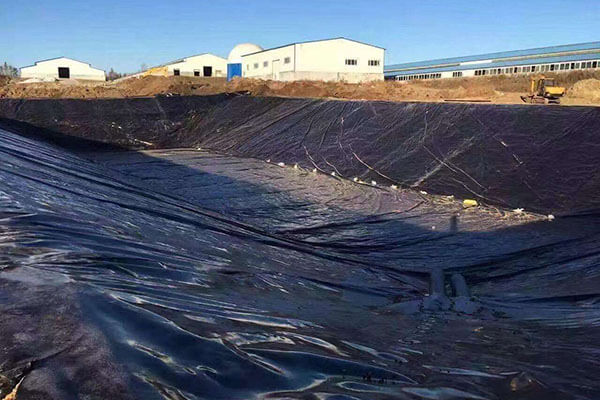Application of Canal Seepage Control Project in Rural Irrigation District
As the main carrier of rural production and domestic water and human and livestock drinking water, the safety, reliability, and energy saving of channel operation is particularly important. Due to the comprehensive constraints of the construction environment, investment funds, design concepts, and other factors, most of the rural channels directly use open channels for the transmission and distribution of water resources.
According to some statistics, the actual water delivery and distribution efficiency of rural channels in my country are low. About 90% of the channels and canal systems have a water utilization coefficient of less than 50%, and some even only about 10%. Due to engineering damage, chaotic management, and indiscriminate digging, a large number of water resources are destroyed and wasted in the process of water resources transmission and distribution, which directly affects the safety, economy, and sustainable development of channel operation. Therefore, combining the actual situation of the project, adopting an effective anti-seepage reinforcement plan, improving the anti-seepage performance of the channel and the economic benefits of the operation, and ensuring the rational development and utilization of limited water resources are an important manifestation of the rural “benefit projects”.
Judging from the application practice of canal anti-seepage projects in rural irrigation areas, when conventional anti-seepage materials such as clay, cement-soil, masonry, and concrete are used for anti-seepage reinforcement, it is often accompanied by high construction difficulty, poor anti-seepage effect, and high comprehensive cost. problem. However, the new composite high quality textured geomembrane anti-seepage material has the characteristics of lightweight, convenient construction and high-cost performance. In practice, it can achieve simple, reliable, and efficient anti-seepage and water-saving reinforcement and repair effects.

The composite geomembrane is composed of geomembrane and geotextile. The geomembrane plays an anti-seepage function, and the geotextile protects the anti-seepage geomembrane from the cracking and tearing damage of the building structure and materials, and improves the mechanical properties of the composite high quality LDPE geomembrane. Reinforcement and repair functions such as anti-skid, infiltration, and filtration.
When using composite geomembrane anti-seepage materials to reinforce and repair canals to prevent seepage and save water, it should be reasonably selected to meet the requirements of relevant national standards according to the scale of the canal project, the total project cost, the geological conditions of the project area, and the groundwater level. According to the accumulation of irrigation and the channel permeability coefficient, after reasonable calculation and determination of channel flow capacity, cut-off, and other parameters, the 0.3 mm thick high-density polyethylene composite high quality environmental geomembrane was finally selected as the channel anti-seepage material. In order to improve the comprehensive anti-seepage and reinforcement performance of the channel, cast-in-place concrete is used to reinforce the lining after water cut. The thickness of the reinforced concrete lining of the general soil channel section is carried out according to the slope 10cm and the bottom plate 8cm, and the special part is carried out according to the slope 12cm and the bottom plate 10cm.
After excavation of the canal embankment and canal bottom, carefully remove sharp-edged debris such as grassroots, tree roots, gravel, stones, and concrete particles to avoid abrasion and puncture of the geomembrane impermeable layer. After removing the debris, ram it firmly. After the channel soil compaction coefficient meets the relevant standards or design requirements and is accepted by the on-site supervision engineer, the composite geomembrane is laid.
Laying, welding, and sewing composite wholesale HDPE geomembrane are strictly prohibited in rainy days. At the same time, during the welding process, ensure that the surface of the substrate is dry, and the water content should be controlled within 15%. Wipe the film with No. 10 gauze before welding. During the entire construction process, no fire is allowed into the construction site, and shoe spikes, high-heeled shoes, and hard-soled shoes are not allowed to directly step on the composite geomembrane. Construction vehicles, construction machinery, and other equipment are not allowed to roll the geomembrane and its protective layer.
The welding operator should observe the welding quality of the high quality aquaculture geomembrane at any time, and adjust the welding temperature and walking speed reasonably according to the weather, temperature, and humidity of the construction area. Since the laying, welding, and stitching of composite geomembrane is a concealed project, self-inspection must be carried out during the construction process and submitted to the supervision engineer for on-site acceptance. Only after the quality is qualified can the next process of construction be carried out.
